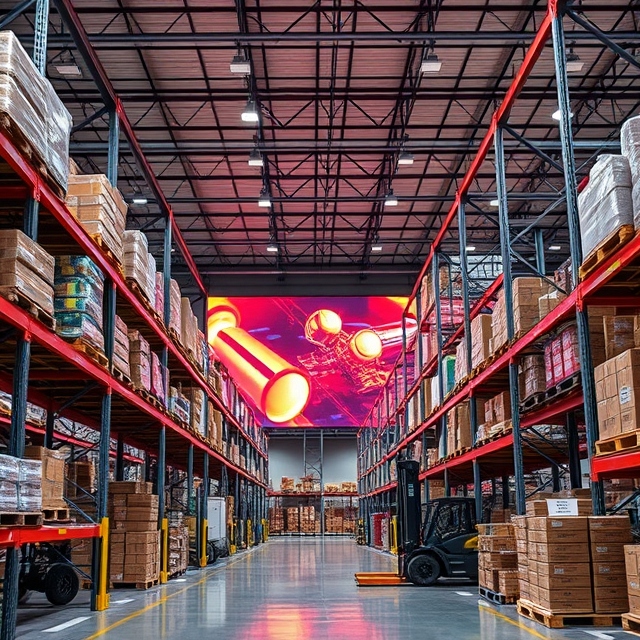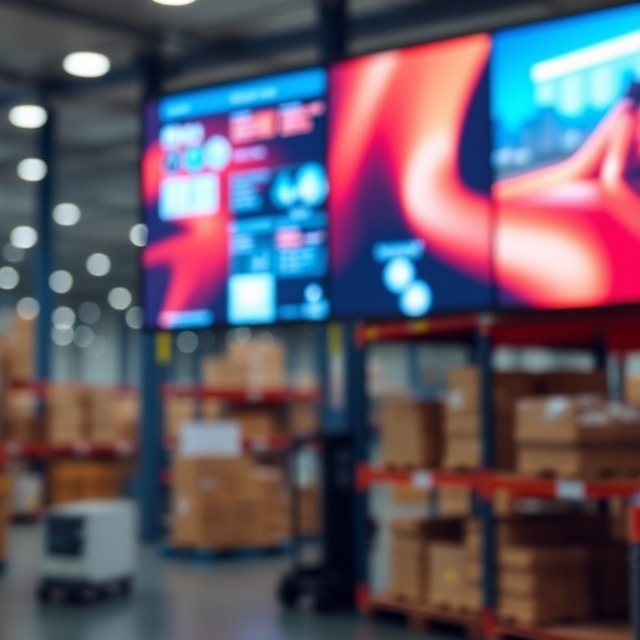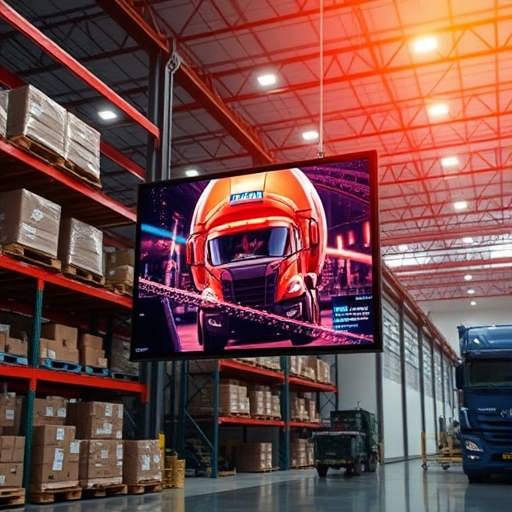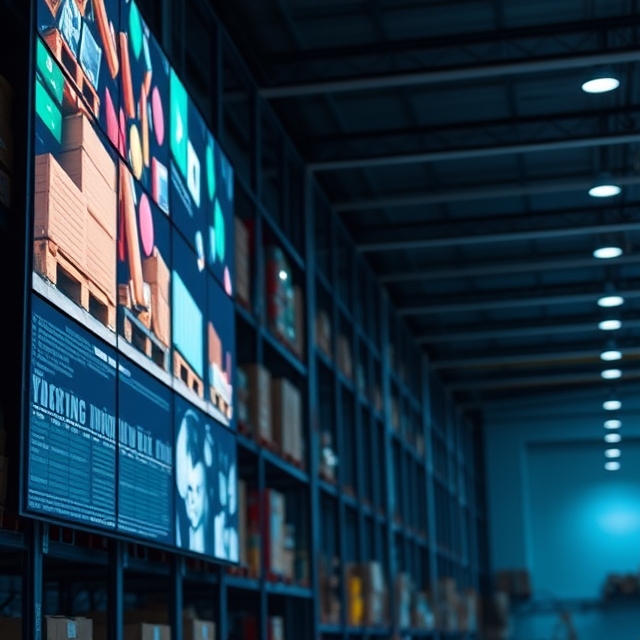- Home
- About Us
- Industries
- Agritech & Smart Farming
- Aquariums & Zoos
- Art & Cultural Exhibitions
- Automotive & Transportation
- Broadcasting & News
- Construction & Real Estate
- Corporate & Offices
- Cultural Heritage & Preservation
- Cybersecurity Operations
- Digital Content Creation & Media
- E-commerce & Online Retail
- Education
- Energy & Utilities
- Entertainment & Media
- Entertainment Arcades & Amusement
- Environmental Monitoring
- Event Management & Conferences
- Fashion & Apparel Retail
- Fashion Retail & E-commerce
- Finance & Banking
- Financial Trading & Stock Exchanges
- Fitness & Wellness
- Food & Beverage
- Food Processing & Manufacturing
- Gaming, Casinos, & Hospitality
- Government & Public Spaces
- Healthcare
- Hospitality & Event Venues
- Insurance
- Legal & Judicial
- Libraries & Community Centers
- Logistics & Supply Chain
- Luxury Cruise & Maritime
- Manufacturing & Industrial
- Meteorology & Climate Research
- Military & Defense
- Mining & Extraction
- Museums & Cultural Centers
- Non-Profit Organizations
- Oil & Gas Industry
- Professional Training & Development
- Public Health & Awareness
- Public Parks & Recreation Areas
- Public Safety & Law Enforcement
- Public Transportation
- Rehabilitation Centers
- Religious & Worship Spaces
- Renewable Energy
- Retail & Shopping Malls
- Retail Banking
- Security & Surveillance
- Social Media & Digital Marketing
- Sports & Stadiums
- Smart Cities & Urban Planning
- Supply Chain & Inventory
- Television & Film Production
- Travel & Hospitality
- FAQ
- Contact Us
- Home
- About Us
- Industries
- Agritech & Smart Farming
- Aquariums & Zoos
- Art & Cultural Exhibitions
- Automotive & Transportation
- Broadcasting & News
- Construction & Real Estate
- Corporate & Offices
- Cultural Heritage & Preservation
- Cybersecurity Operations
- Digital Content Creation & Media
- E-commerce & Online Retail
- Education
- Energy & Utilities
- Entertainment & Media
- Entertainment Arcades & Amusement
- Environmental Monitoring
- Event Management & Conferences
- Fashion & Apparel Retail
- Fashion Retail & E-commerce
- Finance & Banking
- Financial Trading & Stock Exchanges
- Fitness & Wellness
- Food & Beverage
- Food Processing & Manufacturing
- Gaming, Casinos, & Hospitality
- Government & Public Spaces
- Healthcare
- Hospitality & Event Venues
- Insurance
- Legal & Judicial
- Libraries & Community Centers
- Logistics & Supply Chain
- Luxury Cruise & Maritime
- Manufacturing & Industrial
- Meteorology & Climate Research
- Military & Defense
- Mining & Extraction
- Museums & Cultural Centers
- Non-Profit Organizations
- Oil & Gas Industry
- Professional Training & Development
- Public Health & Awareness
- Public Parks & Recreation Areas
- Public Safety & Law Enforcement
- Public Transportation
- Rehabilitation Centers
- Religious & Worship Spaces
- Renewable Energy
- Retail & Shopping Malls
- Retail Banking
- Security & Surveillance
- Social Media & Digital Marketing
- Sports & Stadiums
- Smart Cities & Urban Planning
- Supply Chain & Inventory
- Television & Film Production
- Travel & Hospitality
- FAQ
- Contact Us

Logistics & Supply Chain
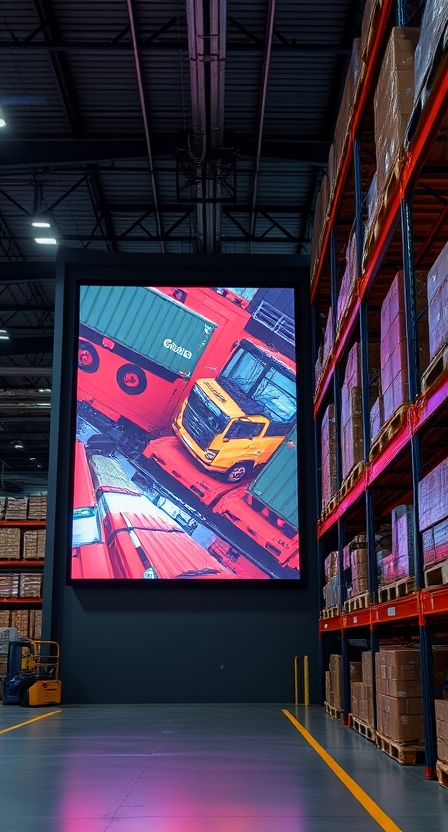
Uses Of Led Display For Logistics & Supply Chain
In the logistics and supply chain sectors, active LED displays play a pivotal role in enhancing operational efficiency, improving communication, and ensuring smooth, real-time data flow across the entire supply chain. These industries often involve complex processes, multiple stakeholders, and large-scale operations, where clear, up-to-date information is crucial to meeting deadlines, reducing costs, and improving customer satisfaction. Active LED displays offer dynamic solutions for these challenges, enabling real-time updates, safety information, and streamlined workflows.
Benefits of Active LED Displays in Logistics and Supply Chain
- Real-Time Information Delivery:
LED displays allow for the instant transmission of real-time data such as shipment statuses, delivery updates, and stock levels, ensuring everyone in the supply chain is informed and can make timely decisions. - Improved Visibility:
LED screens are visible in all lighting conditions, making them ideal for both warehouse floors and outdoor environments, where they can be seen by workers, truck drivers, and customers alike. - Energy Efficiency:
LED technology is energy-efficient, providing long-lasting solutions while reducing operational costs, especially when deployed at scale in warehouses, distribution centers, or on vehicles. - Interactive and Customizable Content:
LED displays can be customized to deliver different types of content based on specific needs, such as product tracking, alerts, schedules, or promotional messages, providing flexibility for various logistics functions. - Durability and Reliability:
LED displays are rugged and built to withstand the challenging environments of warehouses, transportation vehicles, and outdoor locations, ensuring reliability in the face of extreme conditions.
Applications in Logistics and Supply Chain
- Warehouse and Distribution Center Operations
Purpose: Improve operational efficiency and inventory management within warehouses and distribution centers.
Content Ideas:
- Real-Time Inventory Updates: Display live data on stock levels, order statuses, and inventory replenishment needs, helping warehouse staff manage operations efficiently.
- Order Processing Information: Use LED screens to show the current order processing status, dispatch schedules, or shipping details, ensuring staff can prioritize tasks.
- Workforce Coordination: Display shift schedules, task assignments, and real-time alerts to ensure that employees are aligned and informed throughout their shift.
- Shipment Tracking and Delivery Updates
Purpose: Keep customers, employees, and stakeholders informed of shipment statuses, delays, and expected arrival times.
Content Ideas:
- Tracking Information: Show real-time shipment tracking updates, including estimated delivery times and delivery route changes, visible to both logistics personnel and customers.
- Delivery Alerts: Provide notifications on expected delivery times, shipment delays, or tracking statuses, ensuring that customers are informed and proactive in managing their expectations.
- Route Optimization: Use LED screens to display dynamic route adjustments based on real-time traffic or weather conditions, helping drivers avoid delays and improve delivery efficiency.
- Supply Chain Monitoring and Management
Purpose: Optimize supply chain operations by visualizing key metrics and data.
Content Ideas:
- Performance Metrics: Display key performance indicators (KPIs) such as delivery times, costs, and stock turnover rates, helping managers and stakeholders monitor supply chain health.
- Supply Chain Disruptions: Alert team members to disruptions or bottlenecks, such as shipment delays, shortages, or equipment malfunctions, to take corrective action quickly.
- Order Fulfillment Status: Show the status of order fulfillment, including orders that are pending, being processed, or ready for shipping, improving visibility for both workers and customers.
- Fleet Management and Driver Communication
Purpose: Enhance fleet management by improving communication with drivers and tracking vehicle performance.
Content Ideas:
- Route Instructions and Alerts: Use LED screens in delivery vehicles to display real-time routing information, traffic updates, and delivery instructions, ensuring that drivers stay on track and can respond to changes swiftly.
- Vehicle Health Monitoring: Display real-time vehicle diagnostics, such as fuel levels, tire pressure, and maintenance schedules, to ensure fleet vehicles are running efficiently.
- Communication with Dispatch: Provide two-way communication with dispatch centers, allowing drivers to receive updates or send information regarding their location, status, and progress.
- Loading and Unloading Dock Coordination
Purpose: Improve coordination in loading and unloading operations within warehouses and distribution centers.
Content Ideas:
- Dock Status Updates: Display real-time information on which docks are open, which trucks are ready for loading/unloading, and the expected arrival or departure times of shipments.
- Vehicle Queueing: Use LED screens to communicate the order in which vehicles should be processed, helping to avoid bottlenecks and improve efficiency at the docks.
- Product Sorting Information: Display sorting and packaging instructions for specific products, ensuring accuracy and reducing errors during the unloading process.
- Security and Access Control
Purpose: Enhance security measures and streamline access control within logistics facilities.
Content Ideas:
- Security Alerts: Display real-time security alerts, such as unauthorized access attempts or other facility security concerns, improving the response time to potential threats.
- Personnel Tracking: Use LED displays to track which personnel have entered or exited restricted areas, ensuring compliance with safety protocols and preventing unauthorized access.
- Access Instructions: Display access control information such as login credentials, badge scanning instructions, or safety protocols at entry points to ensure smooth access management.
- Customer Engagement and Communication
Purpose: Improve customer experience and provide transparency throughout the supply chain process.
Content Ideas:
- Order Status for Customers: Use LED displays at pick-up locations to show real-time order statuses, such as when orders are ready for collection, or to provide information about delivery times.
- Customer Notifications: Display shipment notifications and tracking updates at customer service desks, allowing customers to see the current status of their orders.
- Promotional Messaging: Use LED screens in logistics hubs or pick-up areas to showcase promotions, discounts, or new services available to customers, helping businesses engage customers beyond the core supply chain services.
- Cross-Docking Operations
Purpose: Improve the efficiency of cross-docking operations, where goods are transferred directly from inbound to outbound transport with minimal storage time.
Content Ideas:
- Sorting and Allocation: Display real-time sorting and allocation instructions for incoming goods, guiding staff in quickly identifying the correct outbound shipments.
- Time-Sensitive Alerts: Alert staff to high-priority shipments or items that require immediate transfer to avoid delays in distribution.
- Inventory Management: Display inventory levels of cross-docked items to ensure smooth operations and minimize misallocation.
- Manufacturing and Production Line Updates
Purpose: Coordinate between production and logistics teams to ensure timely deliveries and efficient production cycles.
Content Ideas:
- Production Schedules: Display production and shipment schedules, ensuring that logistics teams are aware of upcoming product availability and shipment deadlines.
- Demand Forecasting: Show real-time data on demand trends, allowing the supply chain team to adjust inventory levels and manufacturing output accordingly.
- Supply Chain Alerts: Display notifications regarding shortages, production delays, or inventory discrepancies to allow for quick resolution.
Features
- List Item
- List Item
- List Item
- List Item
Advantages
- List Item
- List Item
- List Item
- List Item
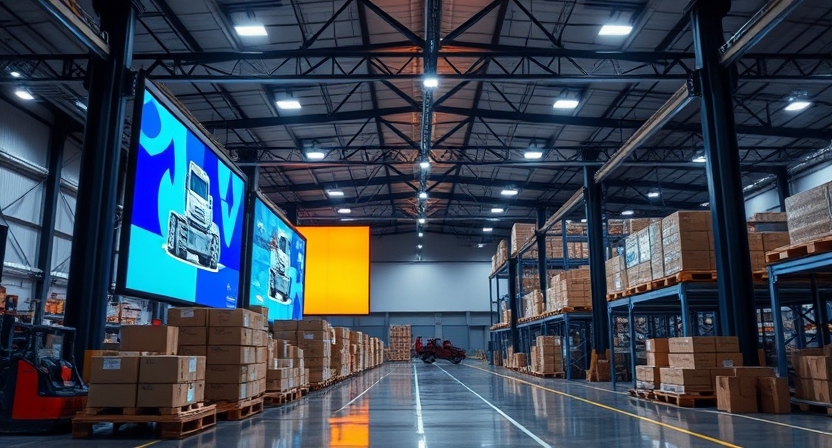
Placement Tips for Logistics and Supply Chain
- Warehouse Floors and Storage Areas:
Install LED displays in strategic locations to display real-time inventory updates, task assignments, and shipment tracking, ensuring staff can easily access crucial information. - Delivery Trucks and Fleets:
Mount LED screens on delivery vehicles to provide real-time updates to drivers regarding route information, performance metrics, and shipping instructions. - Customer Service Desks and Pick-Up Locations:
Use LED displays to communicate order statuses, tracking information, and provide updates to customers, enhancing the overall experience. - Loading Docks and Cross-Docking Stations:
Position LED displays at loading and unloading docks to streamline the coordination of shipments and improve efficiency during fast-paced operations. - Security Gates and Access Points:
Install LED screens at entrances or secure areas to display security alerts, access control information, and personnel tracking, ensuring safety and smooth access management.
Conclusion
Active LED displays are a powerful tool in the logistics and supply chain industries, offering real-time data delivery, enhanced communication, and operational improvements. Whether it’s through streamlining warehouse operations, improving fleet management, or providing real-time customer notifications, these displays offer dynamic and adaptable solutions for businesses looking to improve efficiency, reduce costs, and ensure smooth operations across the supply chain. By incorporating LED technology, logistics companies can optimize their workflows, enhance safety, and keep both employees and customers informed and engaged.

illuminits LED Walls?
Technology
There are three primary LED video wall technologies: ultra-narrow bezel LCD, rear-projection cubes, and direct-view LED displays. Ultra-narrow bezel LCD is the most cost-effective option.
Size
The great thing about illuminits video walls is that they are modular, so you can get them in any size or aspect ratio you want.
Support
The heavier the video wall system becomes, the more panels there are. This puts additional strain on the infrastructure that supports it. illuinits offers the best in-time assistance.
Service
Even high-definition video walls can have problems. This can be a minor or major issue. As a result, Aero provides a variety of comprehensive service packages that ensure minimal downtime at a low cost. Types Of LED Displays
